By Marina Prospero Certified Posture Specialist
Why do we suffer from poor alignment?
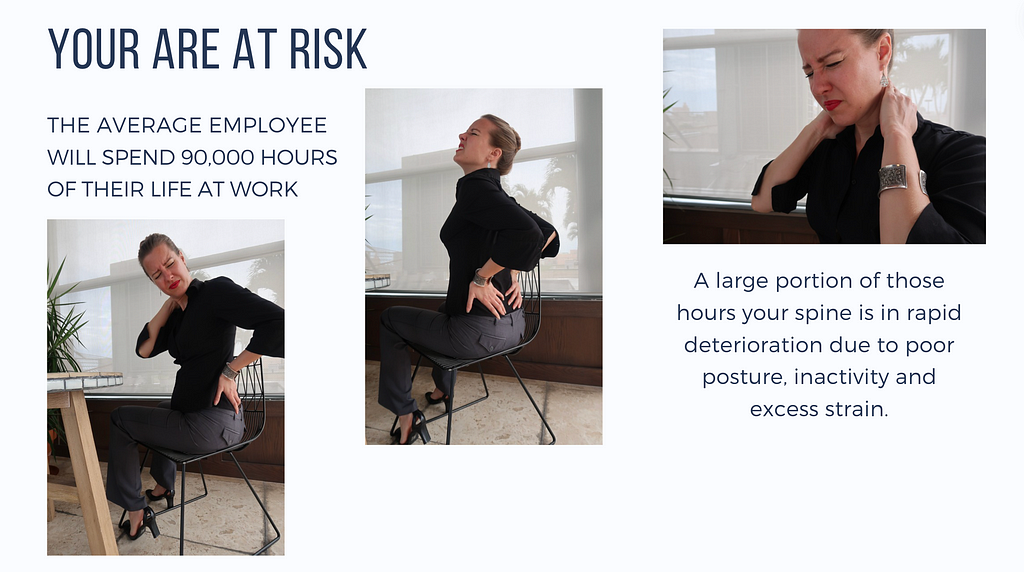
How poor posture weakens muscles and causes chronic pain
Poor posture is actually weak posture. Poor alignment is really a lack of support. Muscle soreness is a common side effect of poor posture. When you slouch, you’re making your muscles work harder to stabilize your spine. The extra stress causes both muscle tightness and fatigue which can lead to chronic muscle pain.
The nerves surrounding your spine can become constricted with poor posture. Because slouching alters your spine’s natural shape, it can increase the pressure placed on the spinal nerves in certain areas. These pinched nerves can result in neck or back pain also causing pain in other areas of your body.
Impact of slouching on spinal nerves and muscle fatigue
While you may not experience pain after a few hours of poor posture, a habit of slouching for months or even years will probably cause back pain to surface.
While back and neck conditions top the list of potential posture woes, there are many others — such as poor balance, headaches, breathing difficulties and foggy thinking.
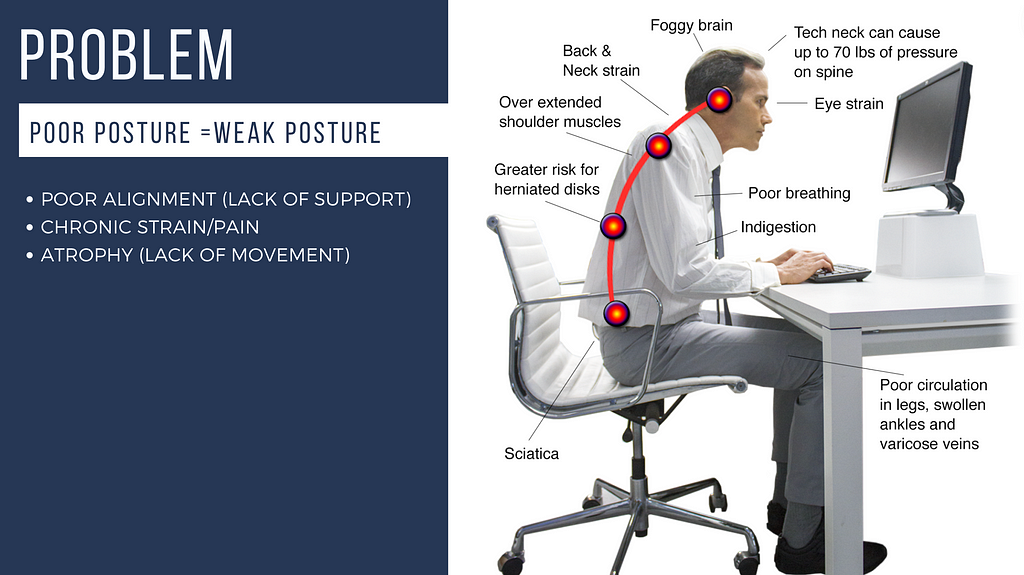
Back pain from poor posture and slumped shoulders at work
Most of us just don’t have the strength to hold our body up to the force of gravity that is constantly pulling us down. We were never taught from a young age how to strengthen our posture and to hold our body in proper alignment. Therefore, we are in a state of collapse with our head hanging forward and our shoulders slumped. In that position, we suffer from a lack of circulation loss of flexibility and range of motion.
Effects of forward head posture on employee wellbeing
Lets examine some of the symptoms of poor posture. According to research, poor posture at work can lead to back pain and trigger higher levels of stress, anxiety and depression which means time off work for many employees. Back pain caused by bad posture is an issue affecting around 70 per cent of the nation’s workforce and is now the second most common complaint among people visiting their company’s human resources department. A business may suffer reduced efficiency while morale and performance of the person experiencing discomfort also diminishes. For every 10° that their head hangs forward that employee is now carrying an extra 40 pounds of pressure on their spine that which may go up to 70 pounds of pressure if left untreated.
Poor posture impacts workplace productivity and employee health
This can create foggy thinking, back and neck strain, overextended shoulder muscles, greater risk of herniated discs, eyestrain, poor breathing, poor digestion, poor circulation in your legs and ankles and of course low back pain or sciatica which is a nerve disorder.
How slouching at work leads to lower back pain and corporate costs
Why are you at risk? Well we spend up to one third of our lifetime at work, that averages out to 90,000 hours of your life… at work and a large portion of those hours your spine is in rapid deterioration due to slouching and inactivity.
- lower back pain is leading cause of work-related disability.
- poor posture can contribute up to $100 billion cost to corporations.
- as a whole the cost per employee adds up
Long-term effects of poor posture on workplace productivity and health
Let’s talk about your life line of your back health. We start our career around the age of 25 and end around the age of 65 so we’re looking at a good 40 years of our life spent at work. So what happens in the beginning your are young, you’re healthy, you’re strong and you start in a static position whether sitting or standing all day. Without proper support you start to slouch because it takes a lot of energy to hold your body up. So you end up just slouching over our computer because its comfortable and it seems the easiest way to deal with it.
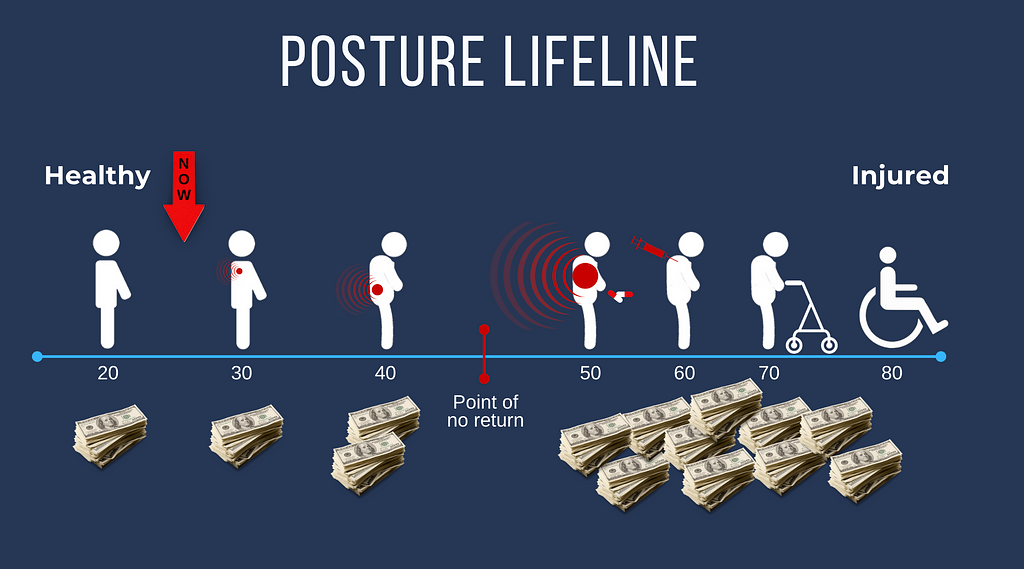
Early career signs of back pain and its impact long-term
Between the age of 25 and 35 you’re slowly deteriorating but you know it’s manageable and not so costly because young people stay active and have more energy after work to exercise and move around. You haven’t really suffered too much chronic pain just yet.
How poor posture in your 30s leads to chronic pain
What we see is around the 10 year mark into your career you hit this critical point you have passed the line of what is manageable and now you become a liability. Your healthcare costs to yourself and your employer increase because you have to seek treatment. Your productivity goes down, your motivation goes down, your enthusiasm for your work decreases because you’re dealing with being uncomfortable all day.
Poor posture’s impact on long-term productivity
This can create foggy thinking, back and neck strain, overextended shoulder muscles, greater risk of herniated discs, eyestrain, poor breathing, poor digestion, poor circulation in your legs and ankles and of course low back pain or sciatica which is a nerve disorder.
Healthcare costs from back pain and sciatica in the workplace
Why are you at risk? Well we spend up to one third of our lifetime at work, that averages out to 90,000 hours of your life… at work and a large portion of those hours your spine is in rapid deterioration due to slouching and inactivity.
- lower back pain is leading cause of work-related disability.
- poor posture can contribute up to $100 billion cost to corporations.
- as a whole the cost per employee adds up
Effective tools for improving posture and reducing neck pain
Let’s talk about a solution and how important strong posture is. Its a myth that we don’t need a tool to achieve proper alignment but the tools have been given to us up to this point have been ineffective.
Daily exercises for core strength and better posture alignment
Supported alignment and exercise therapy, which includes stretching and flexing key foundational muscles and practicing on a daily basis so we can strengthen the foundational postural muscles consistently ensure you’re going to have less discomfort and:
- reduce your neck pain
- reduce your back pain
- optimizing your breathing
- breathing deeper
- increasing your core strength
- boosting your metabolism
- overall feeling better
Psychological factors affecting posture and body alignment
Let’s talk about the psychology of posture. It’s not just physical. After working with thousands of people and listening to their posture pain story I developed a concept called the Trilogy of Posture. In many cases people shared physical, mental and emotional issues that affected their posture over their lifetime.

Trilogy of posture: mental, emotional, and physical alignment
I have come to believe that our posture health is a combination of all three of these things physical, mental and emotional. These three factors all work in developing the way you hold yourself.
Emotions impact posture and confidence in daily life
When you feel good about yourself it is easy to present yourself with confidence and hold your head high. When you are heartbroken you turn inward and get small protecting your heart and emotional body. Think about when you’re feeling strong and confident your shoulders are relaxed, you stand tall and you look people directly in the eye.
How posture affects hormones and self-confidence
Your posture also directly affects your hormones and how you feel about yourself as well as how other people see and relate to you.
Posture, body language, and hormone balance for reducing stress
When you have powerful posture you’re increasing your testosterone and decreasing cortisol basically the hormones that make you feel more powerful and less stress. A Harvard professor Amy Cuddy did ample research on your posture and the way it effects your hormones. I suggest you all listen to her TED Talks here, it is a wealth of valuable information.
Posture research on hormones and power dynamics
We have to be aware of where our mind is at and how we feel emotionally. Each thought and feeling affects your posture and therefore your overall body language.
Sometimes it’s as easy as fixing your physical posture to generate better emotional and mental state. What are the rewards of strong posture: We will look better, feel better and function better.
How good posture improves appearance and confidence
Let’s talk about looking better with a more erect posture:
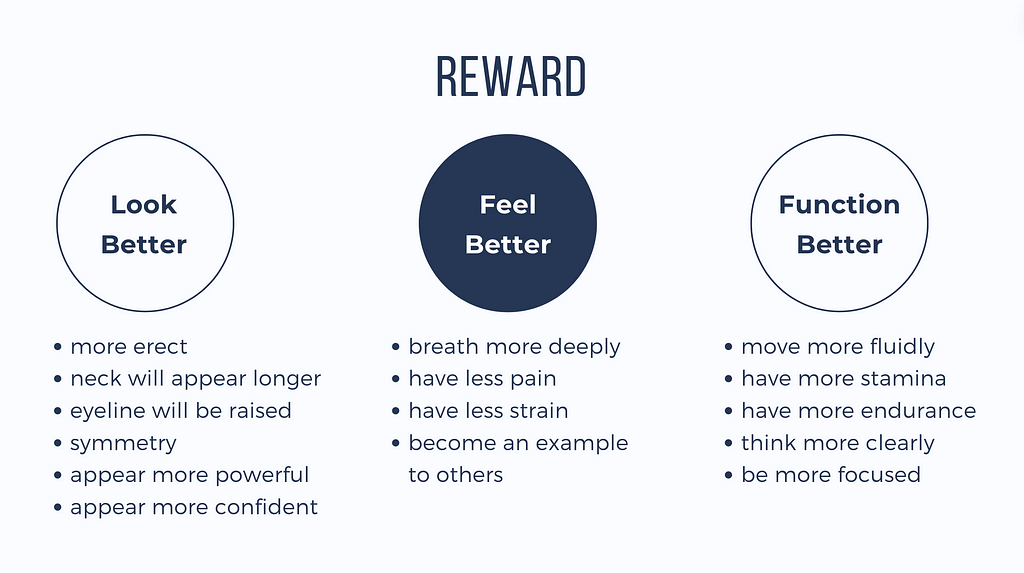
- you’re neck we’re will appear longer
- your eyeline will be raised
- your body will appear more symmetrical
- you will appear more powerful and more confident and trustworthy to others
Posture effects on self-esteem and social perception
Which will help how you feel about yourself and how others treat you:
- you will feel better
- you will breathe more deeply
- you will have less pain has less strain and
- you will become an example to others
When people see my strong posture they automatically lift their posture to mimic mine and therefore feel instantly better in making that small improvement.
Benefits of strong posture for productivity and mental clarity
You’re going to function better:
- you’ll have more stamina and endurance
- you’ll think more clearly and be more focused
- you will be more productive
- you will improve the quality of your life
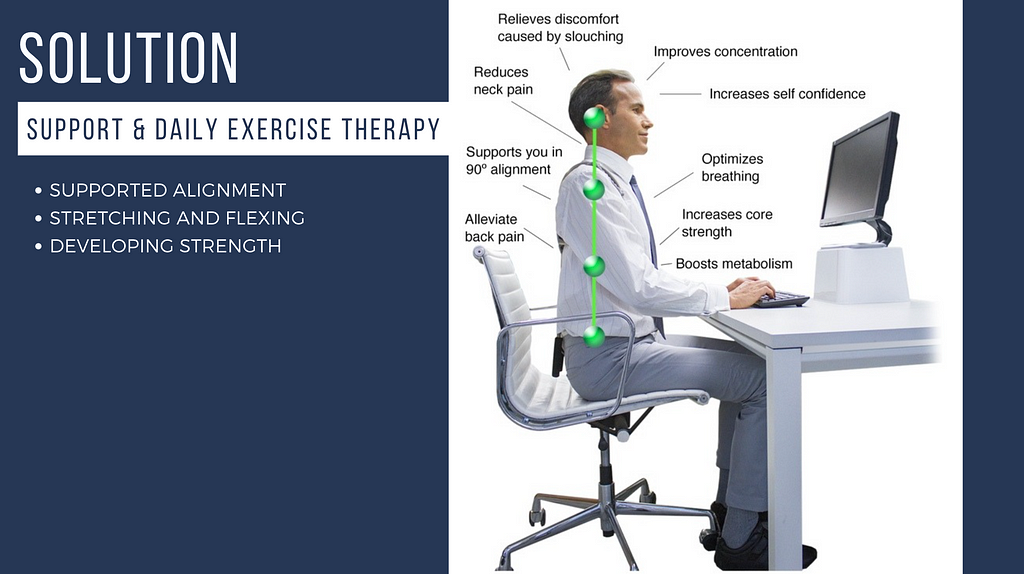
Best ergonomic support for head and shoulder alignment
With the proper wearable ergonomic support:
- your head is balanced over your shoulders, creating equilibrium stacking your vertebrae properly
- your shoulders are held in a relaxed position with your shoulder blades retracted helping expand your chest allowing you to breathe more deeply
- your abdominals are engaged unleashing power from your core helping you hold your body erect
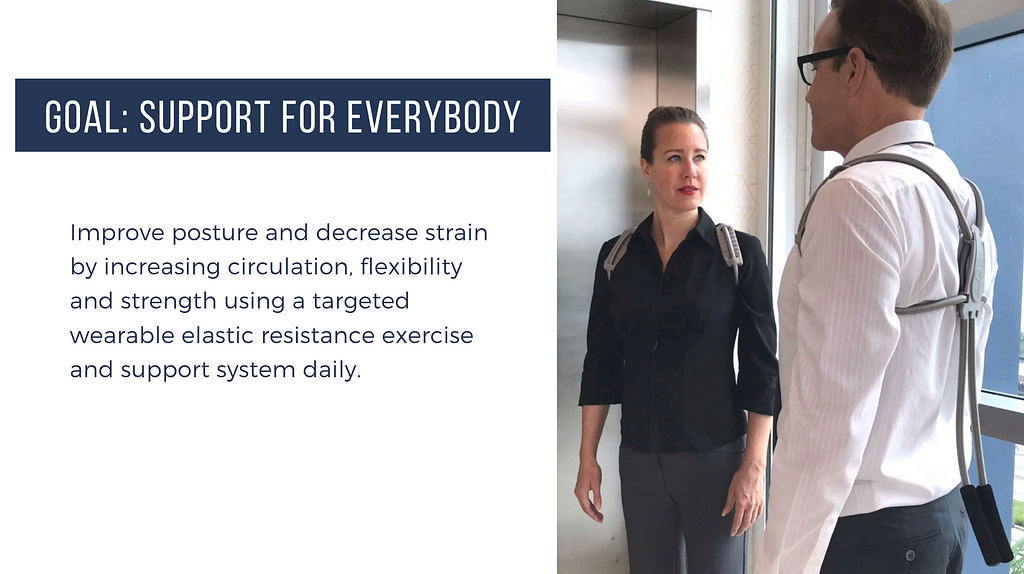
How to prevent slouching with wearable thoracic support
The Back Transformer is more effective than any other back support because of its unique design. Our thoracic support cushion fits in between your shoulder blades adjusting your mid back vertebrae, helping you to effortlessly achieve the four points of proper posture without excess force.
The Back Transformer much more comfortable to wear for longer durations taking advantage of the progressive resistance making you stronger by the minute. Slouching will feel odd and unnatural in only a few days of use.
Resistance training back support
The most effective feature in this system is the wearable elastic resistance training. The use of resistance bands are one of the safest methods to increase strength, rehabilitate injury and to effectively help prevent deterioration.
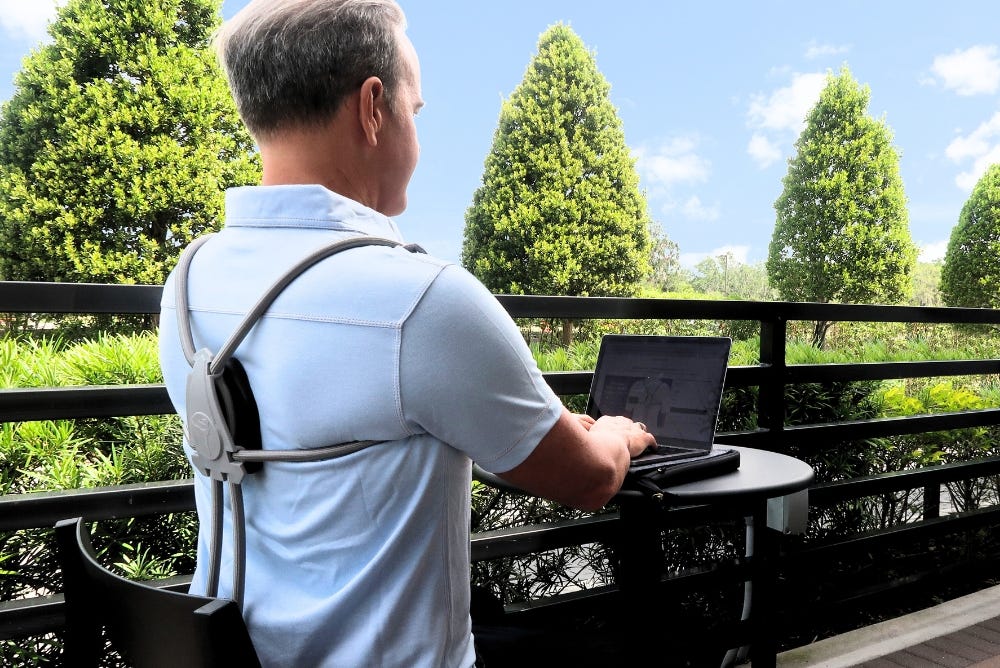
Resistance training back support for injury rehab
It is the fastest method to prevent osteoporosis and to rehabilitate injuries and is used widely in rehab and exercise facilities. Stretching and flexing throughout your day relieves built up tension and strain helping you feel and function better.
The simple daily routine we developed especially for employees is easy to follow and is designed for you to get maximum results. The routine can be performed in as little as 2 minutes a few times a day.
Check it out here:
.


